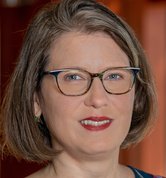Among Bob Buckhorn's campaign promises on his to-do list for his first year in office was to encourage development in urban neighborhoods by writing New Urbanism concepts and form-based zoning into Tampa's development codes.
We've noted before that this was probably an overly ambitious goal for Buckhorn's first year in office, but it is happening. Some efforts to incorporate New Urbanist guidelines into city code already were underway before Buckhorn took office, but he has accelerated the process, city planners say.
New Urbanism is an approach to city planning that values creating walkable neighborhoods with a distinct sense of place and a mix of housing, stores, places to eat and public spaces like parks. Form-based codes are a tool that is used to achieve a vision that is shaped by the community in question and addresses the relationship between building facades and public spaces, the form and mass of buildings in relation to each other and the scale and types of streets and blocks.
A centerpiece of Buckhorn's commitment to New Urbanism is his InVision Tampa plan. In 2012, the city used a $1.18 million federal grant to hire AECOM, a Fortune 500 consulting firm, to help the city reach out to residents, businesses, property owners and others about the future of the "center city” — the central business district, plus the Channel District, Ybor City, North Hyde Park, the University of Tampa, West Riverfront, Old West Tampa, Tampa Heights and V.M. Ybor.
The 136-page plan, released in November, presents a vision for a "community of livable places, connected people and collaborative progress that embraces and celebrates its river and waterfront." It calls for:
• Reimagining and refocusing activity on the Hillsborough River. That includes the Riverwalk, but also developing the west bank of the river as an urban village with its own waterfront trails.
• Creating livable neighborhoods in the center city, with a downtown grocery store and other retail.
• Strengthening links between downtown and nearby neighborhoods. Why not, the plan says, turn Tampa Street and Florida Avenue — now one-way streets dedicated to moving masses of commuters into and out of downtown quickly — into local, two-way streets with lower speed limits, on-street parking and more of a neighborhood feel?
• Make pedestrians and cyclists feel safe and welcome. This could mean creating a east-west "green spine" — a multipurpose trail that could run generally from the V.M. Ybor neighborhood, down Nuccio Parkway, through downtown, over the river, past the University of Tampa and out to West Tampa.
• Create urban patterns that support transit by guiding development to create the kind of density that supports the use of transit.
But for all its detail, the InVision Tampa plan does not have the force of law. It distills Buckhorn's vision and serves as a blueprint for what he wants to do, but it has not been endorsed by the City Council or incorporated as a whole into either the city's comprehensive land-use plan or city development codes.
That's where some other projects come in. Working with residents and others in Seminole Heights, the city began creating a vision for the use of form-based codes before Buckhorn was elected, but that work has continued.
To date, form-based codes have been adopted as part of the city code for some parts of Seminole Heights and are in the pipeline for others.
With InVision Tampa as a guide, the city and AECOM also are working to revise development codes for the Nebraska Avenue corridor and the central business district.
"The central business district regulations are about 25 years old,” said Randy Goers, Tampa's urban planning coordinator. The work being done now will update "those ordinances to reflect the new vision for downtown.”
While the city was doing work with form-based codes before Buckhorn got in office, one thing that has changed is the emphasis on making the Hillsborough River the center of downtown and not its edge, as well as on changing people's view of the river as something to engage with, not a barrier to cross, and on tying the waterfront to neighborhoods.
"All of those talking points really are his,” said Catherine Coyle, the city's planning and urban design manager. "He really took hold of developing the scope. He had a bigger vision for this, which has really helped shape everything we've been doing for the past two years.”
While Buckhorn's administration has done wide-ranging and focused work to shape neighborhood development by writing New Urbanism and form-based zoning into city codes, this remains a promise that Buckhorn pledged to deliver during his first year in office. It's understandable that it would take longer, but that change in plan makes Buckhorn's follow-through on this promise a Compromise.
